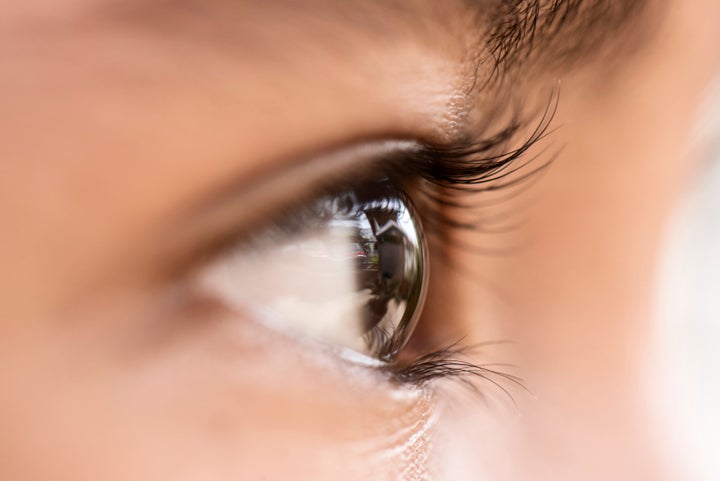
One of parents’ biggest jobs is to teach their children etiquette. Not, like, the rules of fine dining (though kudos to any parents of young children who’ve mastered that). But the really big, foundational stuff. How do children show people respect as they move through their days and lives? In what ways are they considerate of others?
And one area that parents of young children without disabilities sometimes neglect? Basic disability etiquette, which is really about setting expectations for how kids should behave, or not, when they meet someone with a disability or any other external trait that piques their curiosity.
There aren’t hard-and-fast rules. Manners are, to a certain extent at least, subjective. But there are best practices parents should consider, as well as hurtful mistakes to avoid. Here are a few of them:
Looking is OK; rude (or threatening!) staring is not.
Staring is an unfortunate part of life for so many individuals with disabilities, and while not everyone agrees, many express a real openness to children looking at them.
“People are curious,” said Becky Kekula, director of the disability equality index with the nonprofit Disability:IN. “Growing up, one of the hardest things for me to watch was parents pulling their children away from me — telling them not to look or engage.”
Kekula was born with achondroplasia, the most common type of short-limbed dwarfism. And she does not mind when children (or people in general) look at her.
What she does mind is when people stare excessively, or to a point it starts to feel like a physical threat. And she finds it maybe even more offensive when children who look at her are immediately told by their parents to look away because they don’t want to seem rude.
So help your child understand the difference between eye contact and full-on staring, which is a really fundamental Life 101-type skill. It might take some practice, and it’s not a skill you should assume they possess innately.
Encourage questions.
Children are inquisitive, and parents shouldn’t feel compelled to try and fight or curb that instinct when it comes to disabilities. If your child has a question about why another person looks or behaves a certain way, empower them to ask.
“I’d much rather have a child come up to me and ask me a question,” Kekula said, “even if it seems like an offensive question.”
Stopping your child or dragging them away teaches them that difference is taboo. Likewise, pretending that you do not notice physical differences or disabilities doesn’t model tolerance; it sends the message that you’re uncomfortable.
“Tell them it’s OK to look. It’s OK to ask. And it’s OK to not know how to act. The best way to go about it is to ask,” said Jennifer Laszlo Mizrahi, president of the nonprofit RespectAbility.
Don’t make it someone else’s job to educate your child.
While parents should teach their children that it is OK to respectfully ask questions they might have, they should also make sure they know it is completely acceptable for another person to decline to answer or not fully engage. For people with disabilities, boundaries can be an essential form of self-care. And those boundaries are to be respected.
Because ultimately, people with disabilities are not responsible for educating those who do not have disabilities.
“It’s important to teach your child, but don’t do it in front of the person with a disability,” Mizrahi said.
Do the work at home.
It’s important for parents to teach young children about disability, and one simple jumping-off point is to explore disability language together.
Arizona State University has a style guide for journalists that can be a great resource for anyone, Mizrahi and Kekula both said. Spend time reading through it with your kiddo. Be open about the gaps in your own knowledge, and commit to looking things up and learning together.
Books are another great resource. (Here’s a list of 53 children’s books that feature characters with disabilities.) And many school curriculums are increasingly understanding the need to teach students about disability.
The bottom line? These are conversations that should be happening regularly, and you don’t need to have all the answers in order to dive right in.
If your child says or does something hurtful, step in.
This last one is probably pretty obvious, but it is worth spelling out: If your child asks a question or says something that is hurtful or rude to a person with a disability, whatever their intention, it is absolutely your job as a parent to intervene. Hushing them or pulling them away doesn’t cut it.
It can be pretty simple. If your child asked a question that was rude, tell them. (Then once again, follow up later.)
“Then you can say something like, ‘I’m sorry, we haven’t had a chance to talk about these issues yet. I hope we didn’t make you feel uncomfortable,’” suggested Mizrahi.
Awkward moments can and will happen, and that’s OK. Ultimately, the goal is to ensure children treat people with disabilities with the same level of care and respect they’d treat anyone else.
This story is part of a HuffPost Parents project called I See Me, a series for all parents and kids on the power of representation. We know how important it is for kids to see people that look like them on the biggest stages, from politics to sports and entertainment and beyond. Throughout February, we’ll explore the importance of representation in teaching kids about difference, acceptance, privilege and upstanding.